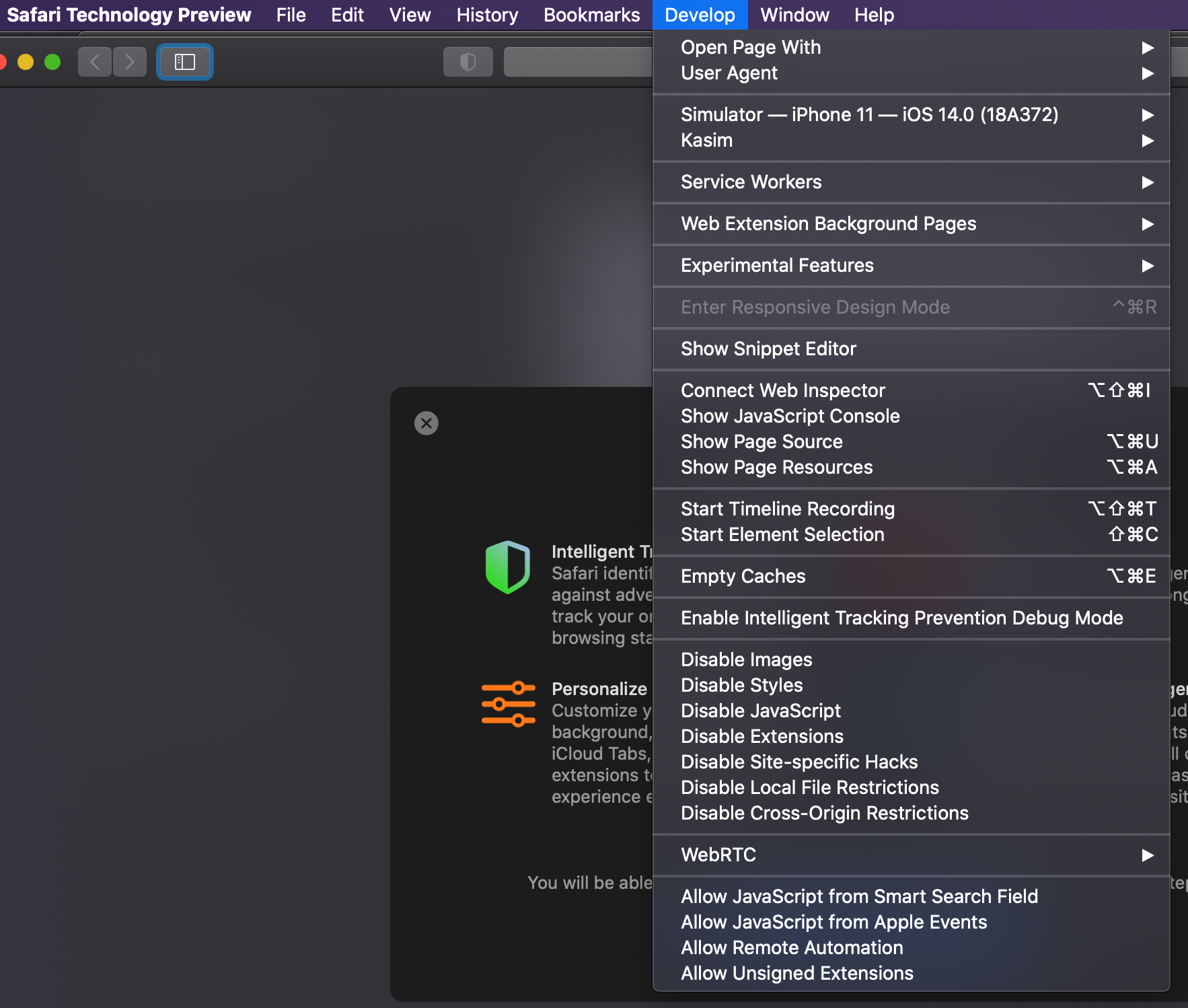

WebKit provides support for the new lab(), lch(), hwb() color syntaxes from Color level 4, providing web developers with ways to express a richer range of colors in Lab, Lch, and Hue-Whiteness-Blackness. This property can be used to set a preferred aspect ratio on any element, including boxes like divs, iframes for embedded video, or graphic design elements on a page.
Safari technology preview review how to#
Watch “Design for Safari 15” at WWDC21 to learn more about the Compact Tab bar and how to use theme-color.

In the HTML meta tag, developers can specify separate colors for Dark Mode and light appearance with the media attribute. Theme-color also changes the Tab Bar and overscroll area background colors in Compact Tab layout for Safari 15 on macOS Monterey and Big Sur and iPadOS 15. By specifying a theme-color, web developers can change the color of the status bar and overscroll area in Safari on iOS 15. WebKit now provides support for theme-color in HTML meta tags, and in Web Manifest. Learn all about the latest WebExtension APIs by watching Explore Safari Web Extension Improvements at WWDC21. This year’s release also adds support for the Declarative Net Request WebExtensions API to block content on the web. Learn how to build Safari Web Extensions and discover how to convert an existing extension by watching Meet Safari Web Extensions on iOS at WWDC21. Now developers can create them for every device that supports Safari, using APIs, functionality, and permissions that are increasingly standardized across all browsers.

Web Extensions use HTML, CSS, and JavaScript to offer powerful browser customizations. This release brings Safari Web Extensions to iOS and iPadOS. With the release of Safari 15 for macOS Monterey, iPadOS 15, iOS 15, and watchOS, as well as macOS Big Sur and macOS Catalina, WebKit brings significant advancements in privacy and security, improved interoperability, and a host of new features for web developers.


 0 kommentar(er)
0 kommentar(er)
